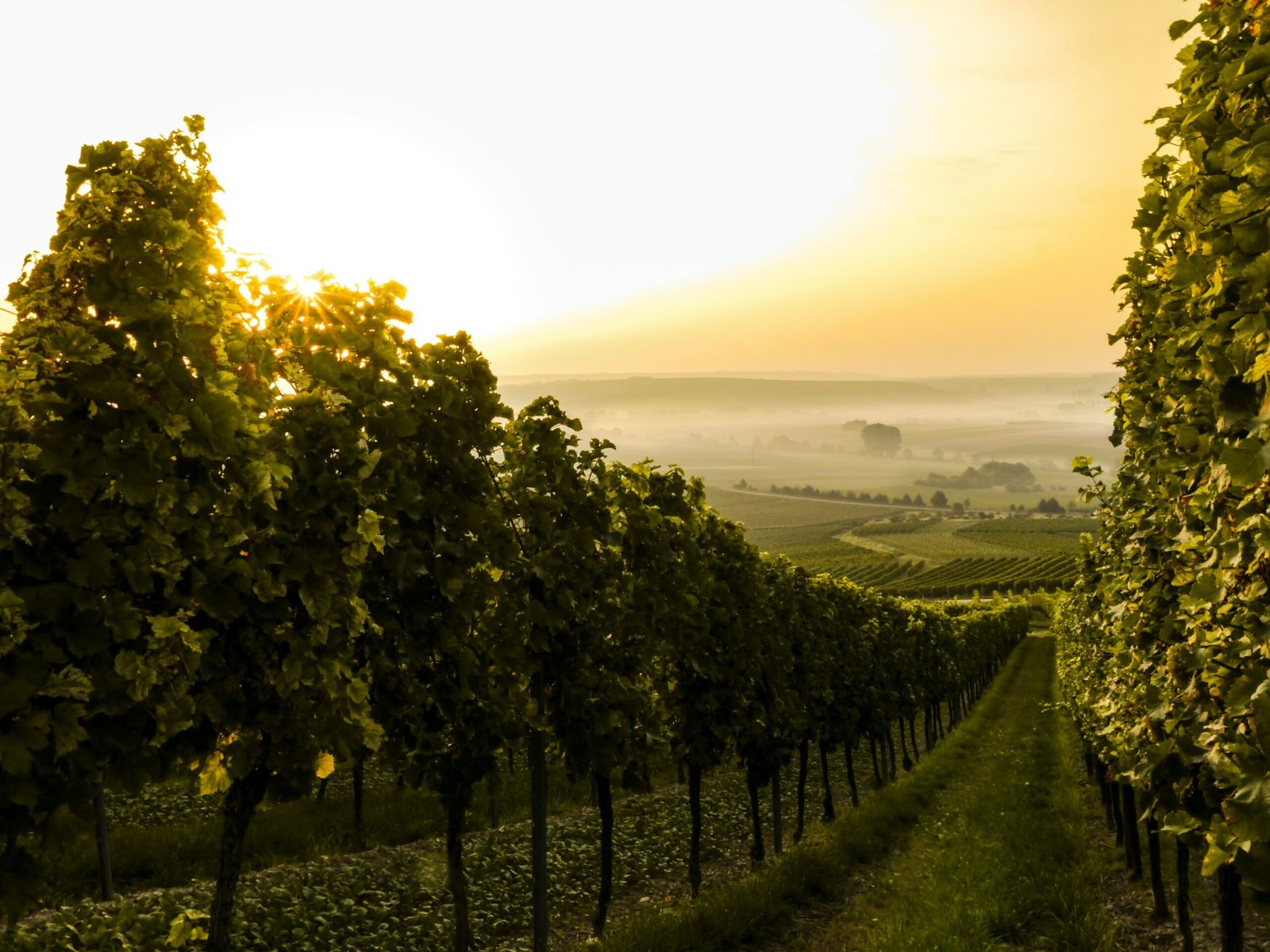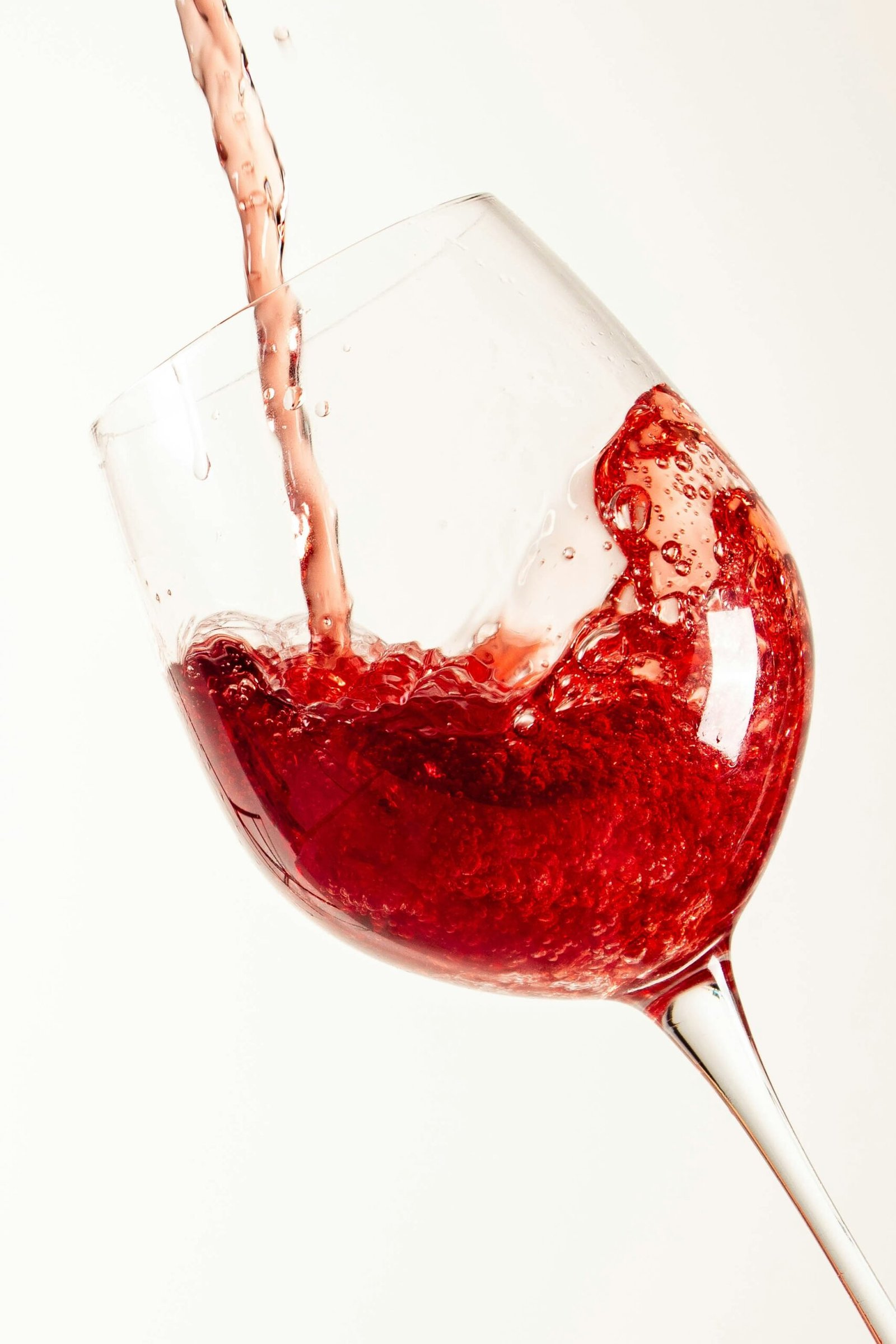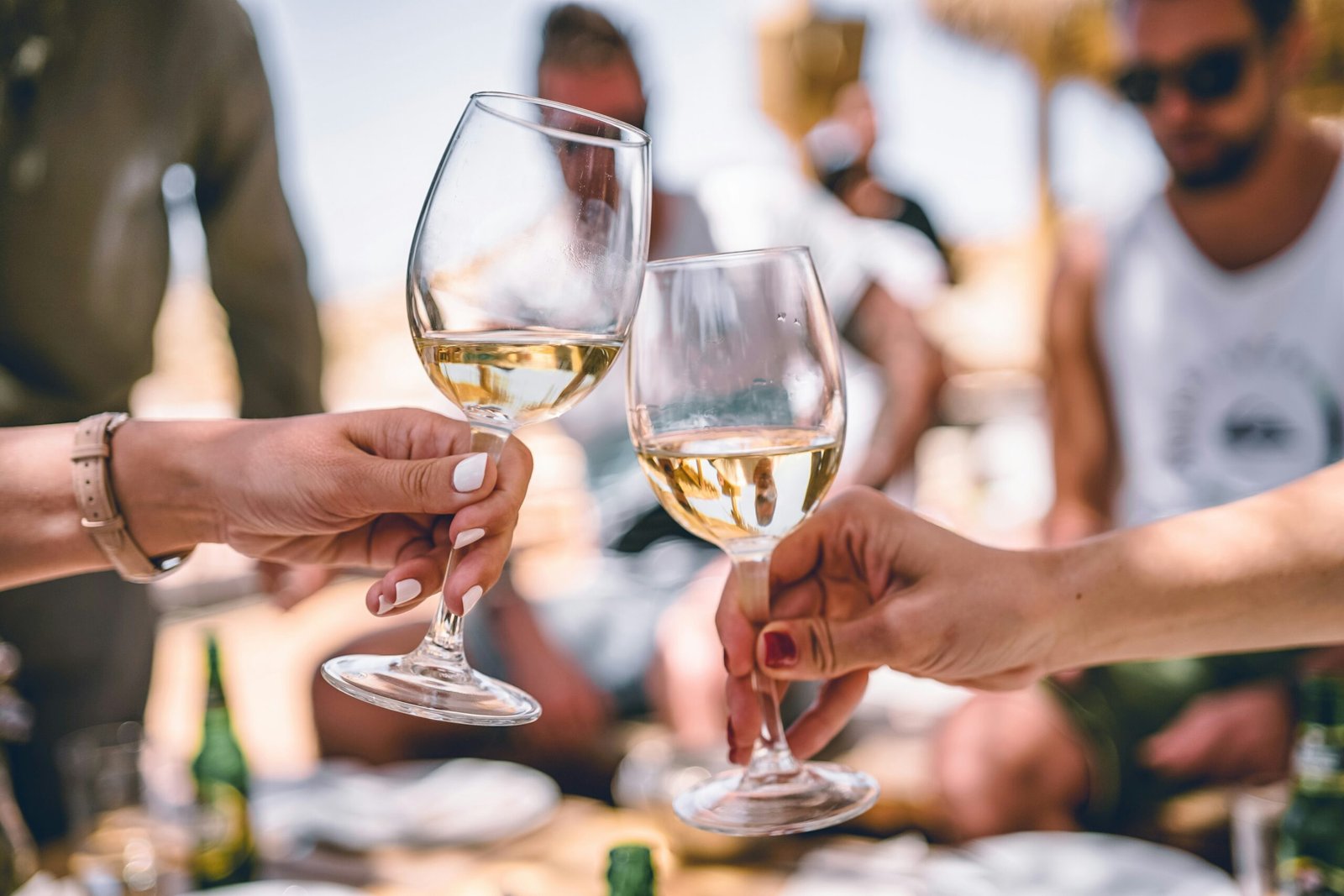Imagine the scene: a bottle of wine that has been aging for 159 years, waiting to be opened and tasted. The anticipation is palpable as you wonder if this 1863 Burm port wine will be a delightful sip or a potential poison. But wait, don’t worry about that just yet! Let’s relish in the fact that you get to witness this extraordinary experience, as Konstantin Baum, the Master of Wine, takes us on a journey through time and flavor. Prepare for your taste buds to be amazed, and let’s begin this incredible adventure together.
As the video rolls, the excitement in the air is contagious. Konstantin carefully examines the bottle, holding in his hands a piece of history that has withstood the test of time. With a hint of nostalgia and a genuine appreciation for the moment, he takes a sip. And just like that, he is stunned by its beauty. This is not just any wine; it is a masterpiece. A wine that surpasses all expectations, deserving of the highest accolades. As you watch, you can’t help but feel your own thirst growing, longing for a taste of this 159-year-old wonder. Get ready to marvel at the wonders of this vintage, and get ready to stay thirsty for more.

Introduction
Context of the article
You find yourself intrigued by a video titled “Drinking a 159-YEAR-OLD WINE!” The video, created by Konstantin Baum, a Master of Wine, has captured your attention and piqued your curiosity about the experience of tasting such an old wine. You are excited to delve into the details and learn about the background, experience, and historical significance of the 1863 Burm port wine.
Video description
In the video, Konstantin Baum introduces the 1863 Burm port wine, highlighting its age and rarity. He expresses both excitement and a touch of apprehension as he contemplates the taste and potential impact of this unique wine. His enthusiasm and curiosity have sparked your own desire to understand the wine’s qualities and how it compares to contemporary wines.
Emotions before tasting
As you prepare to explore the world of the 159-year-old wine, you feel a mix of anticipation, wonder, and a touch of envy towards Konstantin Baum. The thought of tasting a wine that has witnessed over a century and a half of history fills you with excitement. You can’t help but wonder how the wine has evolved over time and how it will taste after such a lengthy aging process. You are ready to embark on a fascinating journey through time and flavor.
Background of the Wine
Origin and production of the 1863 Burm port wine
The 1863 Burm port wine can trace its origins to the Douro Valley in Portugal, a region well-known for producing exceptional port wines. The wine was made using traditional port winemaking techniques, which involve fortification with brandy to boost alcohol levels and preserve the wine. The specific vineyard and winemakers responsible for this particular vintage may be difficult to ascertain due to the passage of time and limited documentation.
Historical significance
The year 1863 holds historical significance due to several events that unfolded during that time. For instance, it marked the height of the American Civil War, with significant battles and political developments happening throughout the year. In Europe, major events included the Emancipation Reform in Russia and the establishment of the International Red Cross. The 1863 Burm port wine serves as a link to these historical events, providing a tangible connection to the past.
Preservation and storage of the wine
Preserving and storing a wine for a significant period requires meticulous care and attention. The 1863 Burm port wine’s longevity can be attributed to factors such as the use of high-quality corks, consistent temperature and humidity conditions, and the proper handling of the wine bottle. Wine collectors and experts use specialized cellars or climate-controlled storage facilities to maintain the ideal environment for aging wines, ensuring their longevity and quality.
The Aging Process
Understanding the aging process of wine
Aging wine involves the deliberate maturation of the wine in a controlled environment over an extended period. During this process, chemical reactions occur within the wine, resulting in complex and desirable flavors. The aging process allows the wine to soften tannins, develop new aromas, and integrate flavors, ultimately enhancing its overall quality and complexity.
Factors that contribute to the quality of aged wines
Several factors contribute to the overall quality of aged wines. These include the grape variety, the specific characteristics of the vintage, the winemaking techniques employed, the storage conditions, and the length of aging. The interplay of these elements greatly influences the wine’s development and determines its ultimate quality and potential for aging.
Why some wines age better than others
Not all wines are created equal when it comes to aging potential. Certain factors contribute to a wine’s ability to age gracefully, including its acidity, tannin structure, and sugar content. Wines with higher acidity and tannins tend to fare better during the aging process, as they possess the necessary components for preservation and development of desirable flavors. Additionally, sweeter wines that are properly balanced can also age well.
Tasting the 159-Year-Old Wine
Preparing for the tasting experience
Tasting a wine as old as the 1863 Burm port wine requires careful preparation. The wine should be allowed to rest upright for a period of time to allow sediment to settle. Opening the bottle should be done slowly and steadily to avoid agitation and minimize the risk of cork crumbling or spoilage. It is advisable to decant the wine to separate it from any accumulated sediment, enhancing the overall tasting experience.
Observations of the wine’s appearance, aroma, and color
Examining the wine’s appearance provides valuable insights into its aging and condition. The 1863 Burm port wine, despite its age, may surprise with its vibrant color, possibly showcasing hues of amber, garnet, or brick. Aromatically, the wine may offer a bouquet that evokes dried fruits, spices, tobacco, leather, and possibly hints of oxidation. Each sensory aspect provides clues about the wine’s history and its transformation over time.
Delving into the unique flavors and characteristics
When tasting the 1863 Burm port wine, flavors may range from dried fruits, such as raisins, figs, and prunes, to complex layers of spices, nuts, and caramel. The wine is likely to reveal a smooth and velvety texture, with well-integrated tannins. It may display a long and lingering finish that highlights the wine’s exceptional quality and aging potential.
Comparing the aged wine to contemporary wines
Comparing the 1863 Burm port wine to contemporary wines provides an opportunity to appreciate its uniqueness and evolution. While modern wines often possess a fresh and vibrant character, the aged wine may offer a depth, complexity, and elegance that can only be achieved through extensive aging. This comparison allows for a deeper understanding of the craftsmanship and expertise involved in producing wines capable of aging gracefully.

Historical Context
Exploring the historical events of 1863
The year 1863 witnessed significant historical events that shaped the landscape of the time. In the United States, the American Civil War raged on, with notable battles such as Gettysburg and the Emancipation Proclamation issued by President Abraham Lincoln. At the same time, Europe experienced revolutions, reforms, and cultural changes that left an indelible mark on the continent. Understanding the historical context of 1863 provides a backdrop for appreciating the value and significance of consuming a wine from that era.
Role of wine in society during that era
Wine held a prominent place in society during the 19th century, particularly among the upper classes. It symbolized refinement, sophistication, and social status. Wine consumption was often associated with formal gatherings, celebrations, and fine dining. Exploring the role of wine in society during the 1860s allows for a glimpse into the lifestyle and cultural customs of the time.
Significance of consuming a wine from that time
Consuming a wine from 1863 carries tremendous historical significance. It allows for a unique sensory experience that transcends time, connecting individuals to a specific era and the people who lived during that time. Tasting the 1863 Burm port wine offers a tangible link to the past and serves as a reminder of the historical events, customs, and traditions that surrounded its production and consumption.
The Value of Vintage Wines
Understanding the market value of vintage wines
Vintage wines often carry a premium price due to their rarity, age, and historical significance. Wine enthusiasts and collectors value these wines not only for their taste but also as historical artifacts. The market for vintage wines fluctuates based on supply and demand, as well as factors such as the reputation of the producer, the condition of the wine, and its provenance.
Factors that affect the price of aged wines
Several factors influence the price of aged wines. Rarity plays a significant role, as wines produced in limited quantities or from exceptional vintages command higher prices. The condition of the wine, including its storage history and potential for continued aging, also impacts its value. Furthermore, wines from renowned producers or those associated with significant historical events or figures tend to carry increased market value.
The role of rarity in wine appreciation
The rarity of aged wines contributes to their allure and appreciation. Limited availability enhances the desirability and exclusivity of these wines. The scarcity of a particular vintage or wine stimulates a sense of urgency among collectors, who seek to acquire these unique specimens for their personal enjoyment or as investments. Rarity, coupled with the exceptional quality of the wine, elevates its value and demand.

Preservation Techniques
Methods used for preserving and storing aged wines
Preserving and storing aged wines require adherence to specific techniques to ensure their longevity. Collectors often resort to specialized cellars or storage facilities equipped with temperature and humidity control to maintain optimal conditions. Proper cork selection and sealing techniques are employed to prevent oxidation and spoilage. Additionally, minimizing exposure to light and vibrations helps preserve the wine’s delicate balance and flavors.
Tips for preserving wine at home
If you wish to preserve wine at home, several tips will help maintain its quality. Store wine bottles horizontally to keep the cork moist and prevent it from drying out, which could lead to spoilage. Maintain a consistent temperature between 45°F and 65°F, as fluctuations can negatively impact the wine. Avoid exposure to direct sunlight or strong artificial light, as UV rays can degrade the wine. Finally, handle your wine bottles carefully, minimizing unnecessary movement or agitation.
How to determine the drinkability of an old wine
Determining whether an old wine is still drinkable can be a daunting task. Factors such as storage conditions, fluctuations in temperature, and the quality of the cork can influence a wine’s drinkability. However, visual cues, such as the color, sediment level, and cork condition, provide initial indications of a wine’s viability. Ultimately, opening a bottle and assessing its aroma, taste, and finish will determine if the wine has retained its desirable qualities or has begun to deteriorate.
The Fascination with Historical Beverages
Why people are intrigued by consuming historical beverages
Consuming historical beverages, such as the 1863 Burm port wine, elicits intrigue and fascination for several reasons. Firstly, it allows individuals to connect with the past in a tangible way, enriching their understanding of history and providing a sense of continuity across generations. Secondly, historical beverages evoke a sense of nostalgia and curiosity, transporting people to a different era and prompting reflection on the customs, tastes, and traditions of long-gone times.
Other examples of historical beverages and their appeal
Historical beverages extend beyond wine and encompass various alcoholic and non-alcoholic drinks. Whiskies, cognacs, and other aged spirits that have undergone extensive maturation offer unique tasting experiences rooted in history. Additionally, traditional beverages and recipes transmitted through generations reflect cultural heritage, fostering a sense of identity and pride. Exploring these historical beverages broadens our knowledge and appreciation of diverse cultures and their culinary traditions.
The connection between taste and nostalgia
Taste possesses a remarkable power to evoke memories and emotions. Historical beverages, with their unique flavors and aromas, have the ability to transport individuals back in time, triggering nostalgic feelings and a sense of connection to their personal or collective past. Tasting the 1863 Burm port wine, for example, may awaken profound emotions and associations, allowing people to momentarily step outside the present and immerse themselves in the history contained within a single glass.
The Significance of the Tasting Experience
The emotional impact of tasting a 159-year-old wine
Tasting a 159-year-old wine like the 1863 Burm port is an emotionally charged experience. It provokes awe, gratitude, and reverence for the craftsmanship and dedication involved in creating a wine capable of withstanding the test of time. The unique sensory encounter establishes a profound connection with history, fostering a deep appreciation for the human endeavors and cultural richness that have shaped the world we inhabit today.
Reflecting on the historical value of the experience
The tasting experience of the 1863 Burm port wine carries immense historical value. It serves as a tangible link to a specific moment in time and bears witness to past events, people, and traditions. By reflecting on the historical value of the tasting experience, we gain insights into the evolution and cultural significance of wine, discovering its position as both a beverage and an artifact encapsulating a wealth of stories and knowledge.
Appreciating the craftsmanship of winemaking
The 1863 Burm port wine stands as a testament to the craftsmanship and expertise involved in winemaking. The dedication and skill employed by the winemakers of that era continue to astound and inspire. Appreciating the craftsmanship behind the production of aged wines fosters a deep respect for the timeless artistry exhibited by generations of winemakers, whose passion and attention to detail have allowed us to savor the joys of exceptional wines even centuries later.
Conclusion
Summarizing the tasting experience
Exploring the 159-year-old 1863 Burm port wine has been a remarkable journey through time and flavor. From the anticipation and wonder before tasting to the observations of its appearance, aroma, and taste, the experience has been one of awe and fascination. The wine’s unique flavors and characteristics, its historical context, and the emotional impact of the tasting have all contributed to a truly unforgettable and enriching experience.
Emphasizing the historical significance
The 1863 Burm port wine holds significant historical value, allowing us to connect with a specific era and understand the cultural, social, and political contexts of the time. Its rarity, age, and connection to historical events make it a precious artifact, cherished by wine enthusiasts and historians alike. This wine serves as a tangible reminder of the craftsmanship, heritage, and human stories that reside within every bottle.
Encouraging others to explore aged wines
The tasting of the 1863 Burm port wine highlights the exceptional qualities and experiences that aged wines can offer. It invites others to explore the world of vintage wines, appreciate their historical significance, and savor the unique flavors and characteristics that develop over time. By engaging with aged wines, individuals embark on a journey of cultural discovery and heightened sensory pleasure, all while embracing the rich tapestry of human history.

Franco Deville, an esteemed wine connoisseur and author, is the visionary behind “Wines of Madeira.” His extensive background in viticulture and wine tasting enriches his detailed guide on Madeira wines. Franco’s dedication to traditional winemaking and innovative approaches has established him as an influential voice in the wine community.
